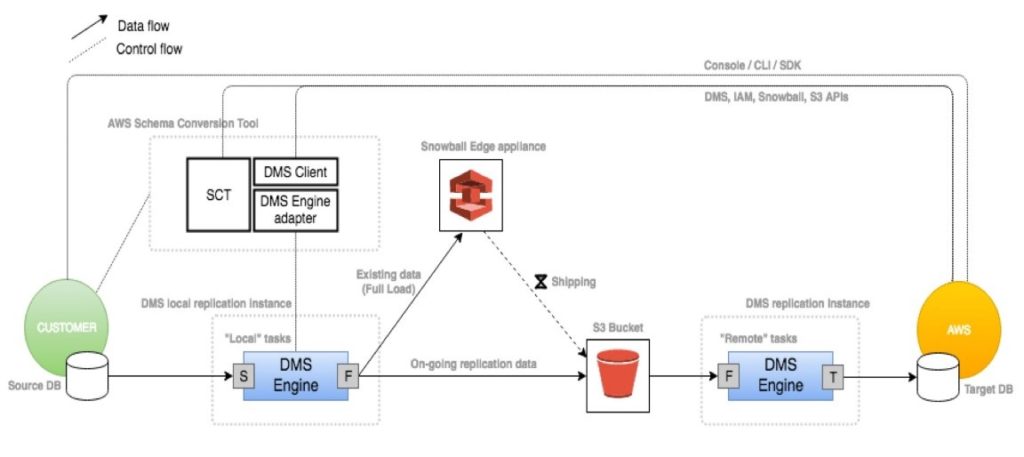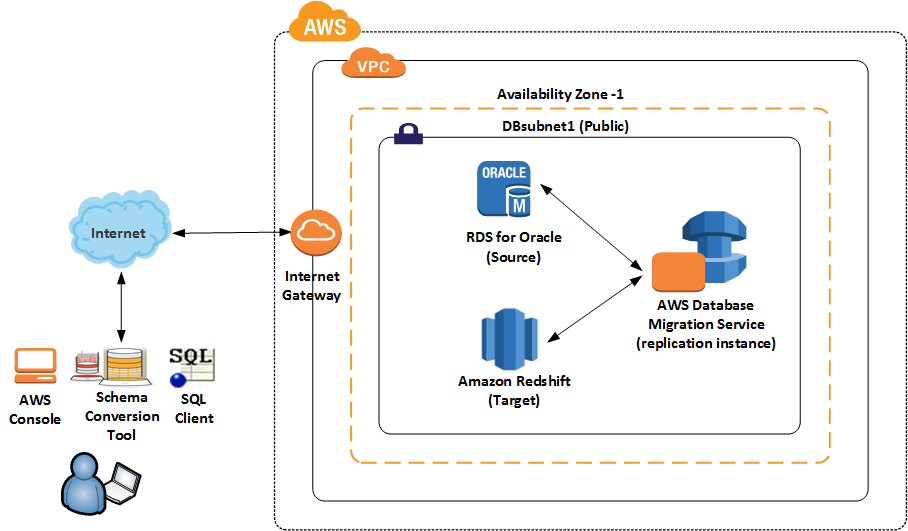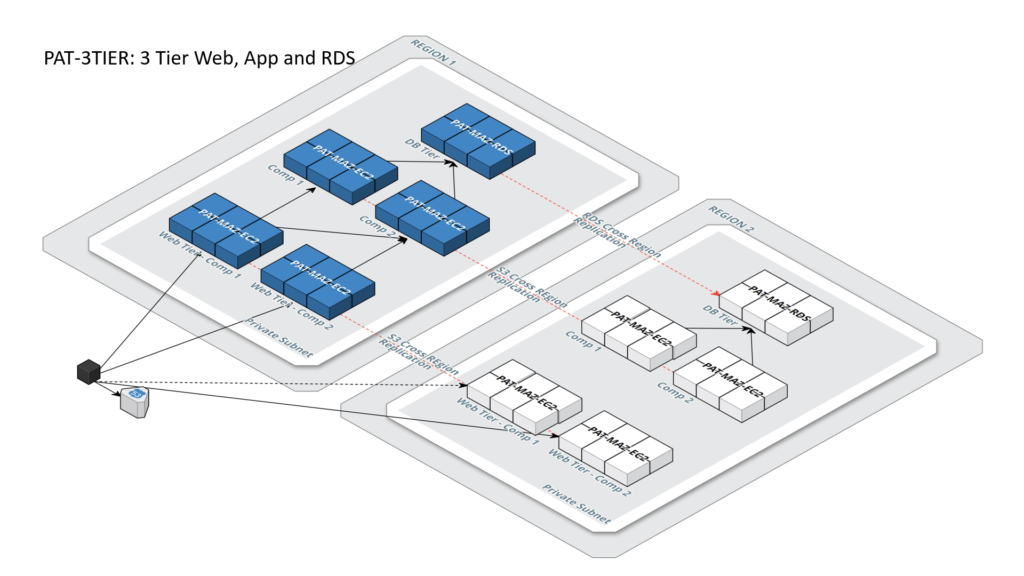In many VLEs (Very Large Enterprises), Oracle estates can run a majority of the business services. However, these clusters of Oracle licenses are extremely expensive. There is a trend within VLEs to consider migrating expensive Oracle Licensed estates, to AWS non-Oracle database platforms. Once re-platformed this allows the Telco to invest in AI, Big Data and predictive analytics to improve business performance, competitive advantages and revenues per subscriber.
To accomplish a transition to digital-Cloud platforms, System Integrators would work with AWS and VLEs to assess which workloads could be migrated to AWS open-source database platforms. We would assess, plan, migrate and fine-tune these workloads on a rational basis, premised on a detailed migration plan and model.
As well SI’s could look at providing VLEs with value-add enhancements such as Business Intelligence, Machine Learning, and AI on the AWS platform.
There are 3 benefits to this approach: Efficiency, Flexibility, Lower Costs.
First, VLEs will move from licensed costs to a service-based cost, saving OPEX. Second, the use of advanced Cloud services will ‘future-proof’ the applications and allow for easier scalability, maintenance and even security and OS patching. Processing up to 100.000 transactions per second or ‘Telco-Grade’ is reasonable within a Cloud-platform so there is no performance degradation. Third we can migrate to Redshift (Datawarehouse) and apply analytics and machine learning to better understand data and use Redshift and other tools within an ETL process as a clean repository for Data mining of relevant information.
For example, within VLEs it is common that Oracle applications may store important subscriber information. By migrating this platform to AWS, we can more easily build a profile of each subscriber, including usage, patterns, billing data and related marketing information to cross-sell or up-sell using AI and analytical tools provided by AWS.
Migrating business applications with expensive Oracle licenses to AWS non-Oracle EC2. A Solution is described below.
Project Example:
- Goal: Erase Oracle licensing costs by moving to Postgres, Aurora or Redshift (Datawarehousing), or perhaps all 3 depending on the workloads and applications
- Challenge: Converting >100.000 lines of code or more (using automation)
- Challenge: Converting many thousands of objects (using automation)
- Challenge: Data Migration to PostgreSQL or Target DB over time (can last many months)
- Challenge: Build a secure VPC and sub-networks that pass an audit
Migration Approach Example:
- Use the AWS Database Migration Service (DMS) & AWS Schema Conversion Tools
- Employ Expert Oracle, Postgres, Redshift and Aurora developers, along with AWS Networking, Security, DB and Architecture SMEs
- Consider the versions of Oracle to be migrated and if upgrading first is necessary
- Security and Network SMEs to build VPC’s, Networks, Firewalls, Security Groups, NATs, IDS, RBAC access etc.
- Use Manual and Code conversion tools which may take on average 3 months to fully convert and test
- After this perform the Data Migration which can take from weeks to many months depending on the data-record volume, schema complexity
- Do a DNS cutover after testing the cloud solution
- Deploy Regression, UAT, Sanity testing
- Deploy CI/CD and automation as necessary
Expected outcome:
- Former Oracle Databases now running on PostgreSQL or Aurora
- Massively reduced licensing costs and OPEX costs by over 60%
- Cross AZ and Region HA and DR
Figure 1 shows the migration process of schemas, data using both networks and for petabytes of data, a Snowball appliance. The target DB could be Aurora or PostgreSQL. Figure 1: Mechanics

Figure 2 shows a slightly different approach suggested by AWS to set up an Oracle DB within the target VPC and do a 1:1 Oracle migration, then move the data into a Redshift (or Aurora) Database. Figure 3 shows the HA configuration in AWS (a pattern).
Figure 2: Migration using Oracle as a staging DB

Figure 3: Target HA Pattern

We would use patterns to deploy HA, DR and resilient 2 or 3-Tier architectures.
ROI and Value to Customer
Expected Outcome:
This innovation will shift VLEs’s business application costs from a CAPEX model, which is dependent in part on constant server acquisition and investment, to on an OPEX model, which is easily scalable. In the OPEX model the server life cycle is no longer a concern, with virtualised resources, VMs, and services provisioned by OPEX budgets. Based on project experience the following metrics can be applied to one Oracle 10G or 12 C application, in migrating it to AWS.
ROI
In our experience the ROI per migrated application is less than 6
months. We have ROI worksheets that we
use with our clients to monitor value and ROI.
There are many variables within this worksheet. Even if we migrate Oracle BYOL to AWS it will
save VLEs 50% per annum.
| 3 Yr. Total Cost of Ownership | ||
| On- Premises | AWS | |
| Server | £ 5,054,491 | £ 2,430,068 |
| Storage | £ 217,627 | £ 66,725 |
| Network | £ 54,945 | £ 24,391 |
| IT- Labor | £ 4,050 | £ 11,523 |
| Total | £ 5,331,113 | £ 2,532,707 |
Based on Oracle 12 EE license costs, 4 instances, 12 servers, 16 cores, SAN, Storage, Rack, HLP.
AWS includes EE license costs transferred to AWS, Networking, Data, 4 large instances, EBS, Backup, Support.
If we eliminate the Oracle EE costs, the ROI will be quite high. The above assumes that the licenses are carried forward which is possible, but over time, the intent would be to move off Oracle into non-Oracle instances. Budget would need to be spent on AWS related skills and operations management. These however are usually 1/3 of the value of the Oracle license costs. Again, providing a tangible ROI win.
Value
- Cloud Operating model with (in our opinion) best practices in networking, security and performance.
- Ability to more easily extend the server estate to take advantage of BI, Machine Learning and other value-add services to analyze, predict, enhance.
- HA, Resiliency built into the deployed pattern.
- Budget available to employ a dedicated team to provide best practices in Security, Monitoring, Operations.
==END
Comprehensive and Up-to-date Material On Topic.